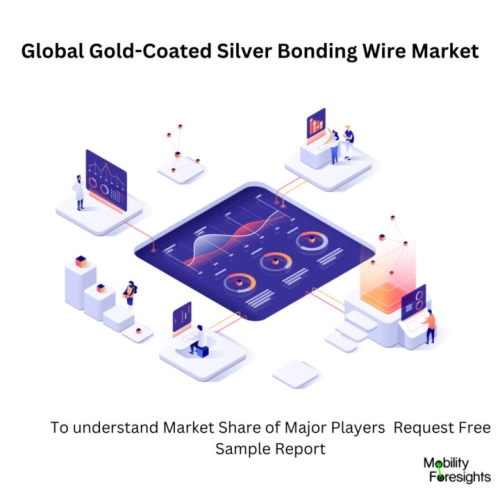
- Get in Touch with Us

Last Updated: Apr 26, 2025 | Study Period: 2024-2030
A bonding wire made of an alloy of silver and silver that has a layer of gold on top to give it the strength and dependability of gold wire. No inert gas is needed, and no further investments or production adjustments are necessary because the specifications nearly match the properties of gold bonding wire.

The Global Gold-Coated Silver Bonding Wire Market accounted for $XX Billion in 2022 and is anticipated to reach $XX Billion by 2030, registering a CAGR of XX% from 2024 to 2030.
The first gold-coated silver bonding wire for semiconductor technology was developed by Heraeus, ensuring great performance at a significantly lower cost. Gold is a major component in wire bonding for memory devices in the semiconductor industry.
But the demand for memory in modern electronics is growing, driven by the storage of large amounts of data. While doing so, producers are looking for alternatives to gold bonding wires in order to produce products more cheaply. Silver alloy bonding wire with a layer of gold is called AgCoat Prime.
The two most crucial elements of this advancement are bondability and dependability performance.Customers can be confident that this innovative product delivers the same performance as gold wires at a great discount.
AgCoat Prime's requirements closely resemble those of gold bonding wire, hence no inert gas is needed, negating the need for any investments or modifications to production facilities and equipment.
It provides essentially a plug-and-play solution for ball bonding machines, and Heraeus supports customers in improving their AgCoat Prime applications at every level. 36% of the market for bonding wire worldwide was made up of gold.
Silver, bare copper, and copper-palladium wire have established themselves as alternatives for numerous semiconductor applications. Now that silver wire is coated in gold, the memory device market could undergo a similar transformation.
| Sl no | Topic |
| 1 | Market Segmentation |
| 2 | Scope of the report |
| 3 | Abbreviations |
| 4 | Research Methodology |
| 5 | Executive Summary |
| 6 | Introduction |
| 7 | Insights from Industry stakeholders |
| 8 | Cost breakdown of Product by sub-components and average profit margin |
| 9 | Disruptive innovation in the Industry |
| 10 | Technology trends in the Industry |
| 11 | Consumer trends in the industry |
| 12 | Recent Production Milestones |
| 13 | Component Manufacturing in US, EU and China |
| 14 | COVID-19 impact on overall market |
| 15 | COVID-19 impact on Production of components |
| 16 | COVID-19 impact on Point of sale |
| 17 | Market Segmentation, Dynamics and Forecast by Geography, 2024-2030 |
| 18 | Market Segmentation, Dynamics and Forecast by Product Type, 2024-2030 |
| 19 | Market Segmentation, Dynamics and Forecast by Application, 2024-2030 |
| 20 | Market Segmentation, Dynamics and Forecast by End use, 2024-2030 |
| 21 | Product installation rate by OEM, 2023 |
| 22 | Incline/Decline in Average B-2-B selling price in past 5 years |
| 23 | Competition from substitute products |
| 24 | Gross margin and average profitability of suppliers |
| 25 | New product development in past 12 months |
| 26 | M&A in past 12 months |
| 27 | Growth strategy of leading players |
| 28 | Market share of vendors, 2023 |
| 29 | Company Profiles |
| 30 | Unmet needs and opportunity for new suppliers |
| 31 | Conclusion |
| 32 | Appendix |